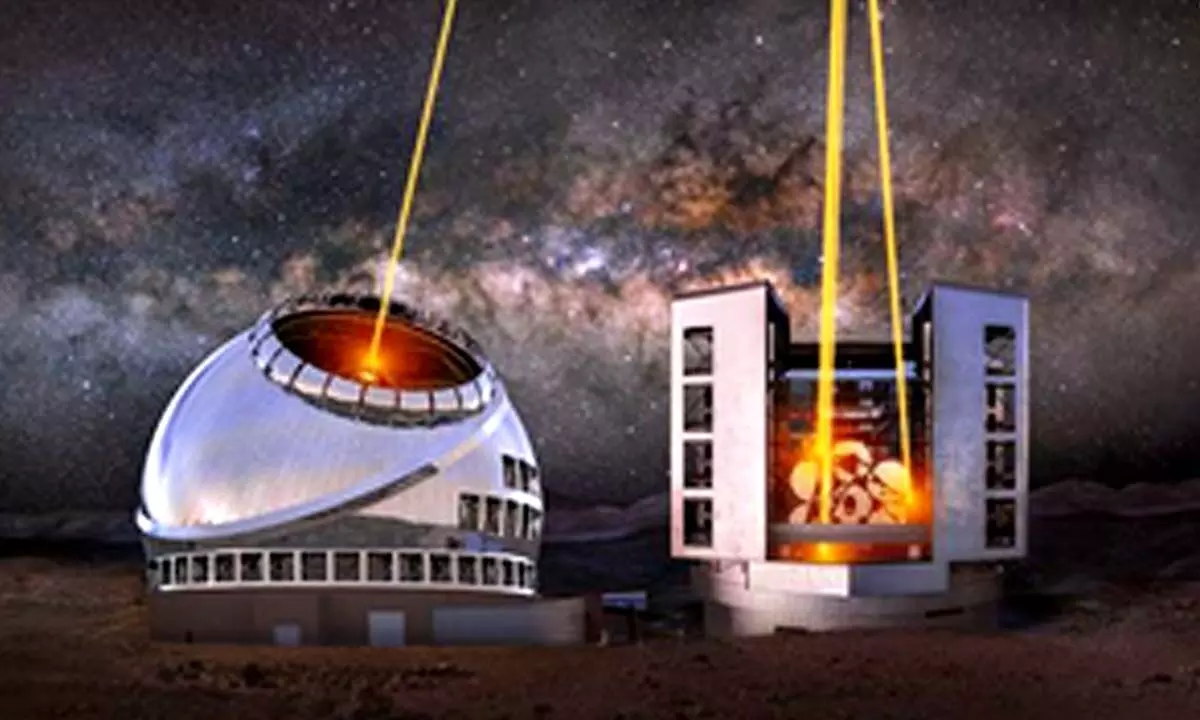Live
- Literature crucial in nurturing creativity
- Academicians debate on trends observed in 2024 General Elections
- Adah Sharma to perform Shiv Tandav stotram at the MahaKumbh mela
- Haryana Guv urges TG, AP CMs to implement NEP-2020
- Tail-end farmers should get irrigation water, says Uttam
- SpinSci to churn out 1K AI-based jobs in Telangana
- Kothapalli-Manoharabad rly line to be operationalised by 2027
- Industrial production at 6-mth high in Nov
- Traffic restrictions on heavy vehicles in Rachakonda
- BoB signs MoU with Singareni
Just In
Indian scientists develop tool to generate infrared star catalogue for Thirty Meter Telescope

A team of Indian scientists has developed an open-source tool to generate an infrared star catalogue for the Thirty Meter Telescope (TMT), which is a planned telescope proposed to be built on Mauna Kea
New Delhi: A team of Indian scientists has developed an open-source tool to generate an infrared star catalogue for the Thirty Meter Telescope (TMT), which is a planned telescope proposed to be built on Mauna Kea, on the island of Hawaii, the Ministry of Science and Technology said on Tuesday.
The online tool to create a comprehensive star catalogue for the Adaptive Optics (AO) system of the upcoming TMT can enable this ground-based telescope -- one of the largest to be operational in the next decade -- to generate sharper astronomical images.
India is a key partner in the TMT project, with the India TMT Center at the Indian Institute of Astrophysics (IIA) in Bengaluru leading the national collaboration.
"The AOS system on TMT, known as the Narrow Field Infrared Adaptive Optics System (NFIRAOS), will be enhanced by a Laser Guide Star (LGS) facility," said Dr Sarang Shah from IIA.
This facility will project up to nine lasers into the sky to create artificial guide stars.
"However, atmospheric turbulence affects these laser beams, so measuring atmospheric tip-tilt is uncertain. To correct these effects, the AO system requires feedback from three real stars, known as Natural Guide Stars (NGS)," Shah said in the research published in the Astronomical Journal.
Telescopes on the surface of the Earth face the challenge of atmospheric distortion, affecting the quality of captured images. The TMT will use an Adaptive Optics system that continuously senses and adjusts for atmospheric changes to produce high-quality images. Researchers at the IIA and their collaborators have developed an automated code that can be used as an online tool to create a catalogue of Near Infrared (NIR) stars.
"The automated code can compute the expected near-infrared magnitudes of stellar sources identified in various optical sky surveys using their optical magnitudes," said Dr Smitha Subramanian, co-author and faculty at the IIA.
Our method shows great promise in generating the all-sky catalogue of NIR stars needed before TMT’s first run in the next decade, added Shah.
India’s participation in the TMT collaboration involves three institutes: the IIA, Bengaluru, the Inter-University Center for Astronomy and Astrophysics (IUCAA), Pune, and the Aryabhatta Research Institute for Observational Sciences (ARIES), Nainital.

© 2025 Hyderabad Media House Limited/The Hans India. All rights reserved. Powered by hocalwire.com






